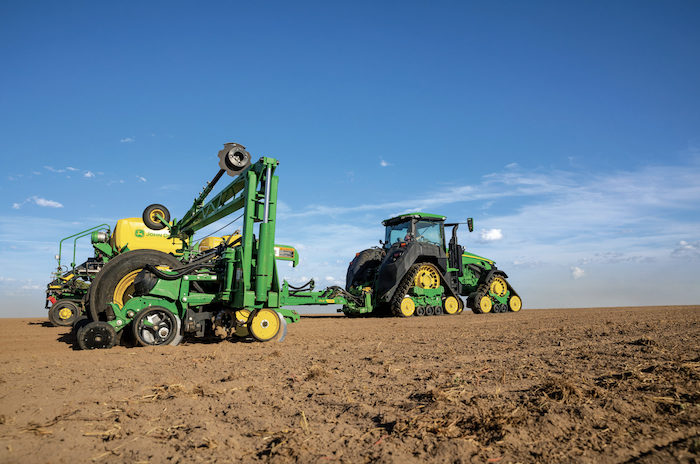UPDATED: Watch video demo
During John Deere's CES 2023 keynote address, the company revealed ExactShot, a new planting technology that will help Deere's customers be more productive, profitable, and sustainable.
"Everything we do at John Deere is focused on real purpose and real impact," said Jahmy Hindman, CTO at John Deere. "This means we're developing technology that enables our customers to provide the food, fuel, fiber and infrastructure that our growing global population needs."
ExactShot allows farmers to reduce the amount of starter fertilizer needed during planting by more than 60%. The technology uses sensors and robotics to place starter fertilizer precisely onto seeds as they are planted in the soil, rather than applying a continuous flow of fertilizer to the entire row of seeds.
- ExactShot will help farmers be economically and environmentally sustainable as they work tirelessly to grow the food, fuel and fiber that we all rely on. With the global population expected to grow from 8 billion to nearly 10 billion by 2050, farmers need to increase production by 60% to 70% on today's arable land.
- ExactShot uses a sensor to register when each individual seed is in the process of going into the soil. As this occurs, a robot will spray only the amount of fertilizer needed, about 0.2 ML, directly onto the seed at the exact moment as it goes into the ground.
- Across the U.S. corn crop, ExactShot could save over 93 million gallons of starter fertilizer annually and prevent wasted fertilizer from encouraging weed growth or increasing the risk of running off the field into a waterway.
Analysts at J.P. Morgan say ExactShot will be the successor to ExactRate on Deere planters today (given minimal incremental costs and anticipated superior technology, though, ExactRate will likely still be available in select cases).
The technology will commercially launch in the next few years and can be retrofit to existing planters potentially as far back as about 10 years, according to the analysts.
"ExactShot has the capability to reduce starter fertilizer use upwards of 60%, which would reflect about $650 million in annual savings for U.S. farmers at current commodity prices," the J.P. Morgan analysts write.






